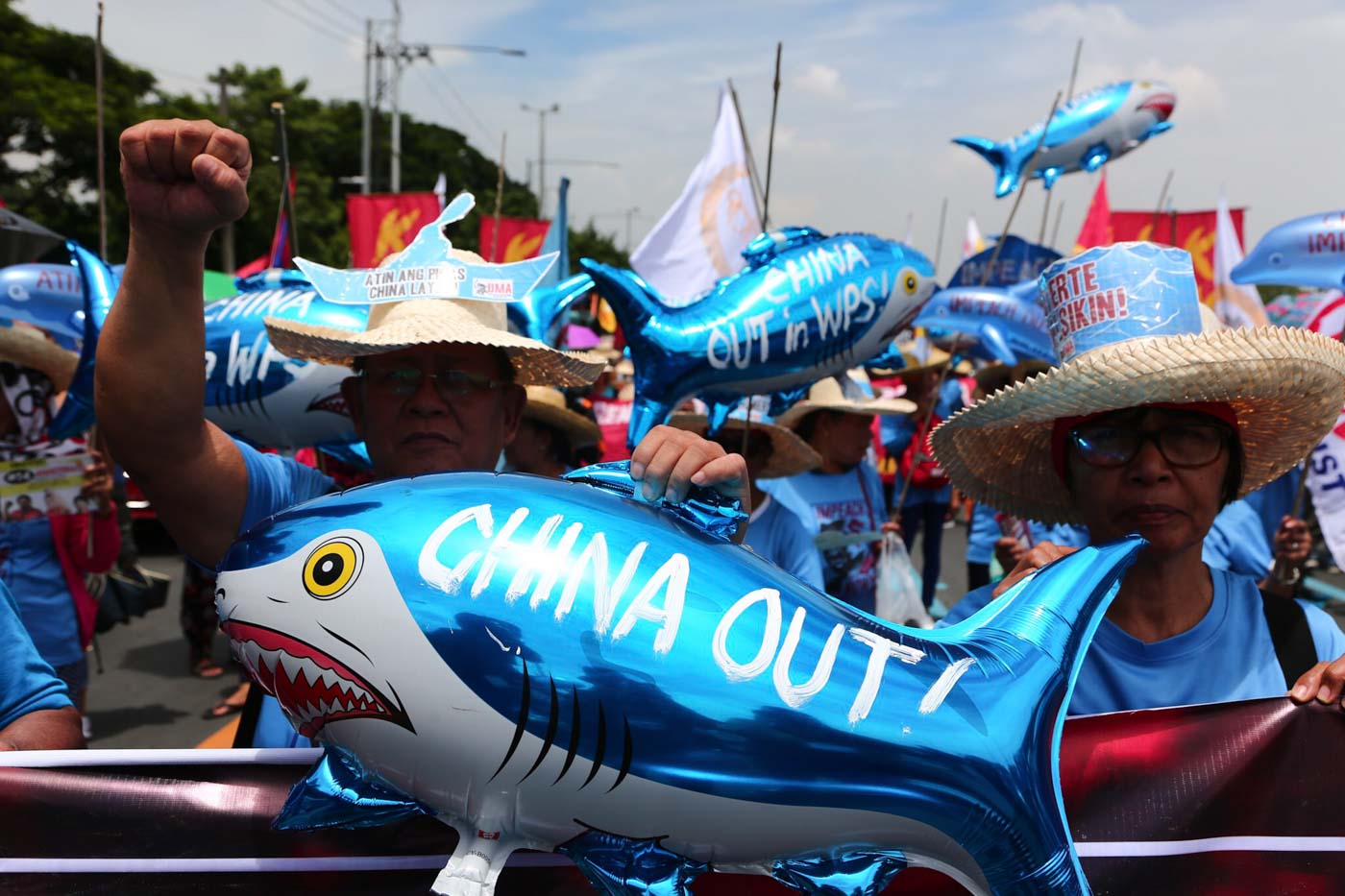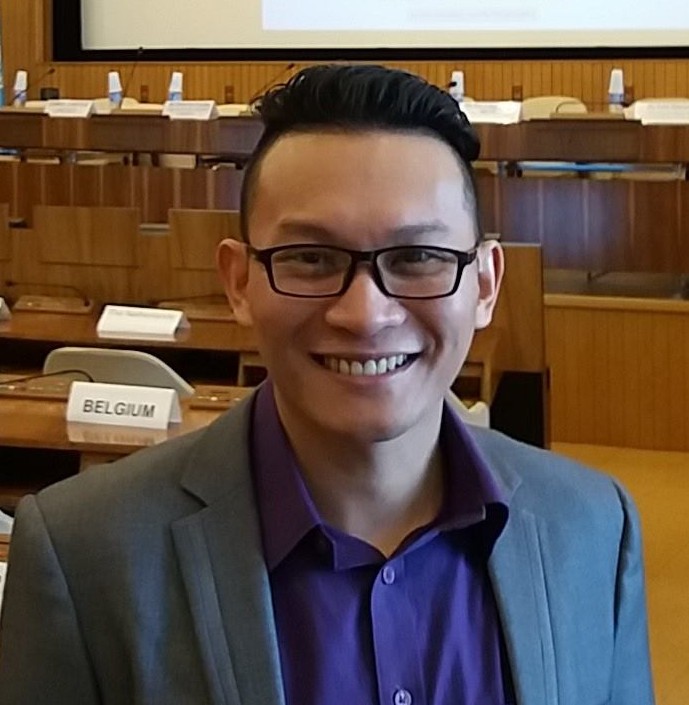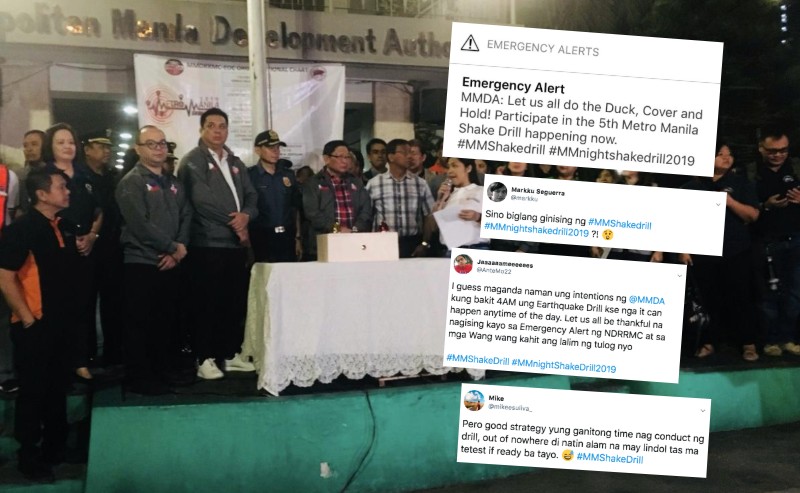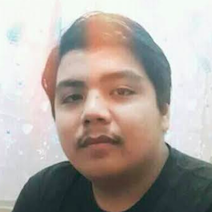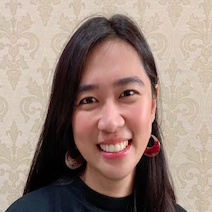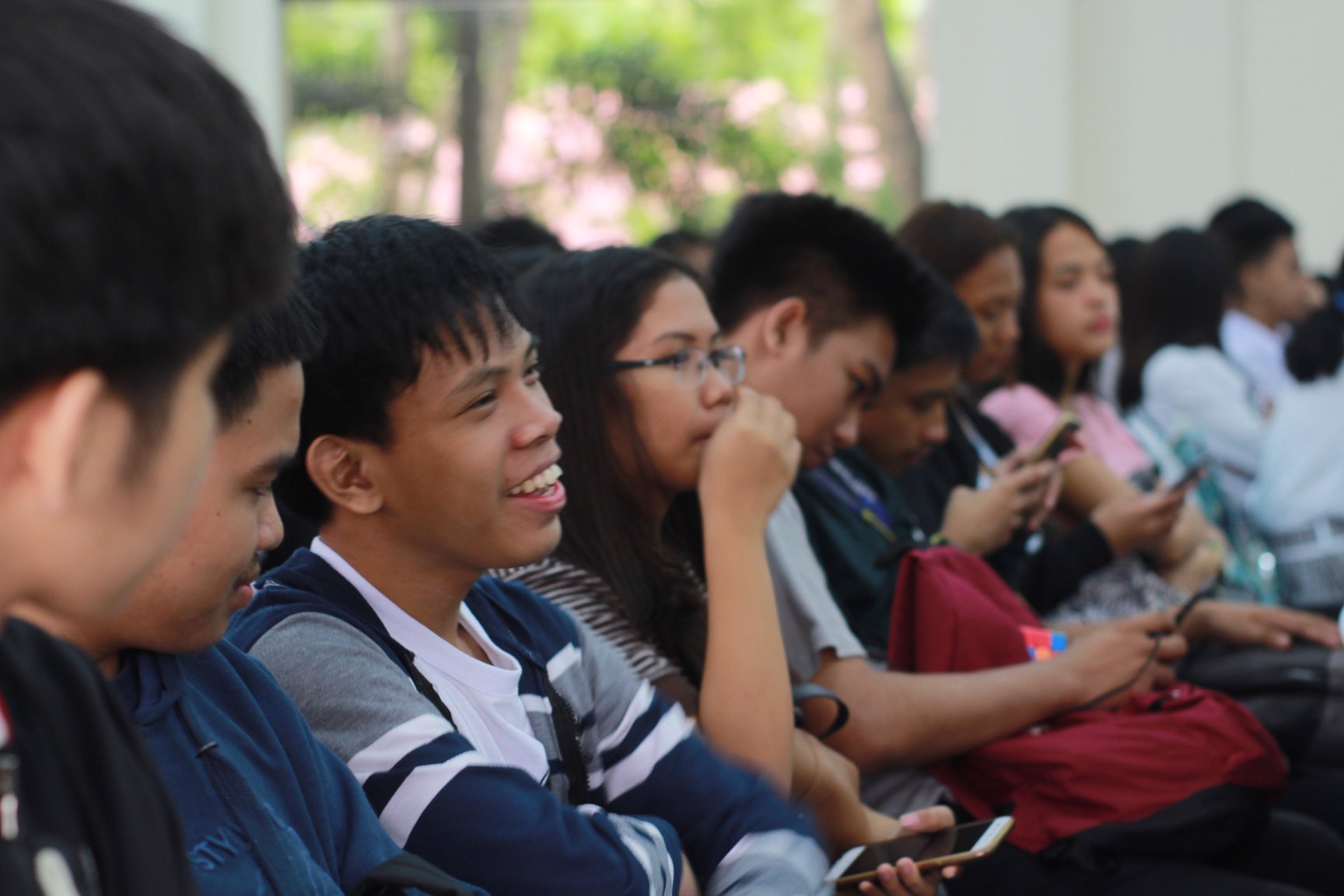![MARCH. Protesters from the United People's SONA brave the rain as they march along Commonwealth Avenue on July 22, 2019, to stage a program during President Rodrigo Duterte's State of the Nation Address. Photo by Maria Tan/Rappler]()
MANILA, Philippines – On the day of President Rodrigo Duterte's 4th State of the Nation Address (SONA), thousands of Filipinos took to the streets to share their own version of the state of the nation.
According to police estimates, around 5,350 protesters who were undeterred by the rain marched along Commonwealth Avenue for the United People's SONA past 3 pm Monday, July 22.
The United People's SONA was pushed forward by a broad coalition of opposition personalities and sectoral groups in a bid to highlight the country's struggle for sovereignty, democracy, and livelihood. (READ: IN PHOTOS: From Luzon to Mindanao, thousands cry 'Atin ang Pinas!')
Among the popular personalities present during the rally was former chief justice Maria Lourdes Sereno, who urged Filipinos to look at the nation's future and see what could be done to stop the government's wrongdoings.
"Ano ang magagawa natin upang ibangon ang demokrasya at paano ipaglaban ang kinabukasan ng mga batang Pilipino? Hindi po ito ang kahulian. Magsasama pa po tayo (What can we do to champion democracy and fight for the future of Filipino children? This is not the last. We will still be together)," she said.
![LEAD. Former chief justice Maria Lourdes Sereno is among the attendees of the United People's SONA on July 22, 2019. Photo by Jire Carreon/Rappler]()
Defending sovereign rights
This is the second time in a row that groups staged the United People's SONA to show the state of the nation from the perspective of the Filipinos.
Aside from tackling issues under the Duterte administration, this year's march focused on defending the Philippines' sovereign rights over the West Philippine Sea.
This comes in the aftermath of the sinking of a Filipino fishing boat by a Chinese vessel, which the administration dismissed as a mere "maritime incident."
Makabayan's Neri Colmenares hit the close ties between Duterte and China, pointing out the exploitation of the Philippines' resources and fishermen in the West Philippine Sea.
"Hinayaan niyang kunin ang ating territoryo ng Tsina sa West Philippine Sea. Hinayaan niyang apihin ang ating mangingisda ng Tsina...kulang na nga ang kita ng ating mangingisda, pinamimigay pa ni Duterte sa kanyang among mga Tsino."
(He let China take our territory in the West Philippine Sea. He let China take advantage of our fishermen....our fishermen don't earn much as it is, but Duterte still gives it away to his Chinese masters.)
He dismissed Duterte's claim that talking back to China could mean war, saying that other countries like Vietnam have spoken up about China's exploitation of their waters.
"Tayo pa na nanalo sa international tribunal, tayo pang lumuluhod sa Tsina. 'Yan ang kataksilan ni Duterte. Tayo ay panalo pero astang talo tayo," Colmenares said.
(We won in the international tribunal, yet we bow down to China. That's Duterte's betrayal. We won but somehow we're the bigger losers.)
"Kung gayon, tumayo tayo at itindig natin ang ating teritoryo, itindig natin ang sambayanang Pilipino (If that's the case, let's stand by our territory, let's stand by Filipinos)," Colmenares added.
![CHINA OUT. Different protest groups gather in different parts of Commonwealth as they await the main march to St Peter Church on July 22, 2019. Photo by Jire Carreon/Rappler]()
![LEAVE. A protester wears a boat hat during the United People's SONA on July 22, 2019. Photo by Jire Carreon/Rappler]()
![SONAKAKALOKA. Bahaghari is one of the groups that joined the United People's SONA on July 22, 2019. Photo by Jire Carreon/Rappler]()
Chel Diokno and Leody de Guzman were also present during the rally.
Diokno echoed Colmenares' call, saying the huge attendance on Monday shows that there will always be Filipinos ready to defend the rights of the country and its people.
"Makakaasa po kayo na sama-sama po tayong lalaban, at hindi tayo titigil hanggang umiral ulit ang katarungan, katotohanan, at paninindigan sa ating bayan," he said.
(You can rest assured that we'll be together in this fight and we won't stop until justice, truth, and dignity prevail again in our country.)
During the United People's SONA, protesters burned a Duterte effigy bearing a likeness to a "syokoy" (merman). The effigy represents Duterte selling out the West Philippine Sea to China.
![EFFIGY. Protesters burn the effigy dubbed as 'Syokoy Duterte' during the United People's SONA on July 22, 2019. Photo by Alecs Ongcal/Rappler]()
Plight of workers
Other issues were also raised during the United People's SONA, such as attacks against human rights, extrajudicial killings, and the impact of the government's economic policies.
De Guzman, a labor union leader, shared how, 3 years into Duterte's term, his promises to workers remain unfulfilled.
He denounced the current form of the security of tenure bill, saying the anti-endo measure hardly solves the issue of contractualization in the country.
Labor groups and business chambers alike disagree with the bill, with workers saying it fails to address key issues such as the end-of-contract or endo scheme.
Before marching for the United People's SONA, labor groups gathered for their own United Workers' SONA to shed light on unresolved workers' demands.
"Itong batas sa kontraktwalisasyon ay puwede nating masabing isang pako na minamartilyo ni Duterte sa mga manggagawa para pahirapan (We can call this bill on contractualization as a nail being hammered by Duterte to make workers' lives more difficult)," De Guzman said.
He said the existence of protests by labor workers from companies such as Sumifru, NutriAsia, and Zagu shows that the government doesn't prioritize the labor sector.
"Iyan po ang mga buhay na karanasan na nagpapatunay na ang gobyernong ito ay gobyerno para sa mga kapitalista, gobyerno para sa mga trapo (traditional politicians); hindi gobyerno para sa mga manggagawang Pilipino," De Guzman added.
(That is real proof that this government is a government for capitalists and traditional politicians, not a government for the Filipino worker.) – with reports from Aaron Tolentino and Enrico Berdos/Rappler.com
For highlights of President Duterte’s 4th SONA, check out our live blog.
For related stories, visit Rappler’s 2019 State of the Nation Address page.
Rappler takes a deeper look at the first half of Rodrigo Duterte’s presidency – its highs and lows, its achievements and shortcomings: Duterte Year 3: The Halfway Mark
![]()















